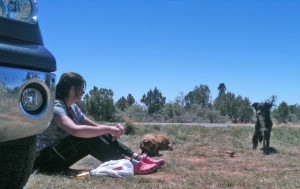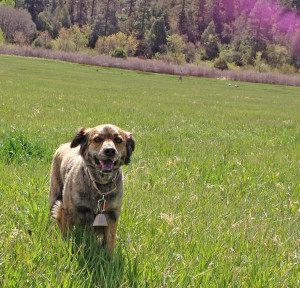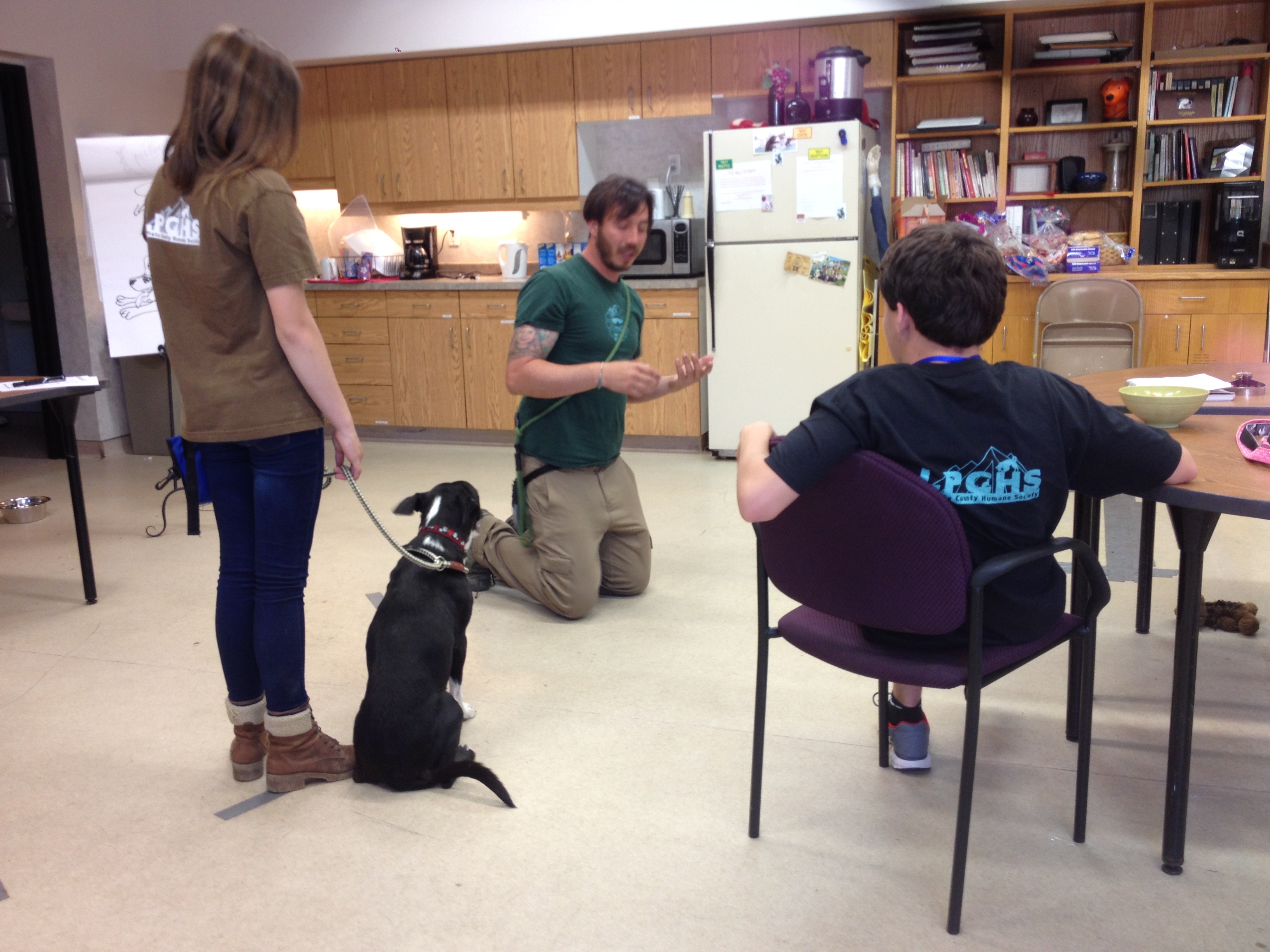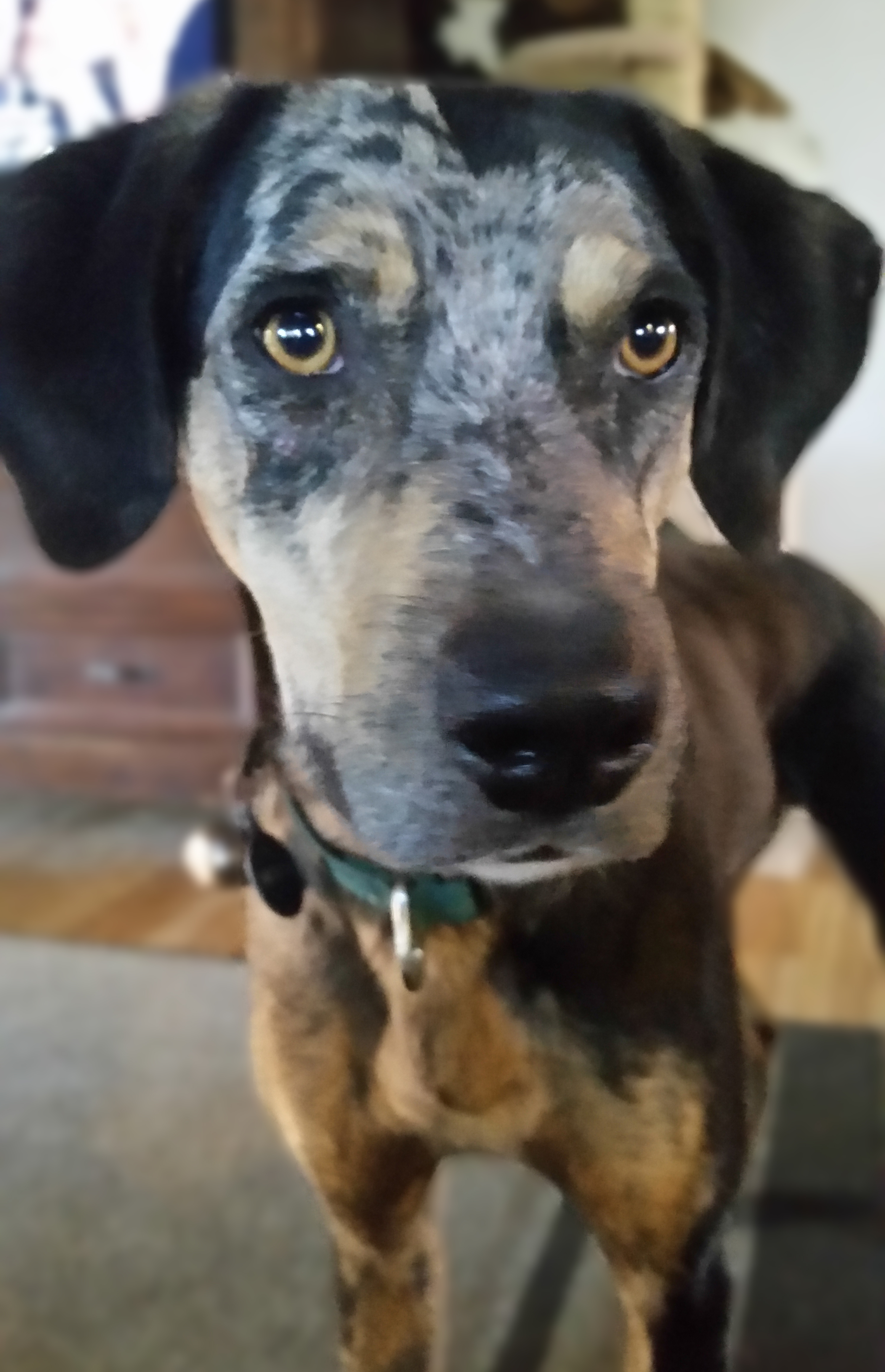I often get asked about exercises to help dogs build their confidence. Having worked in animal shelters for a great deal of time I have learned a lot about shy and fearful dogs but having one of my own has really opened up my eyes to all that we can do to help our dogs adjust to the world.
 Approximately 4 years ago I was called in to help with a houseful of dogs who had been living in a single-wide trailer with an older man. The man had passed away and the 25 or so dogs that lived in the house with him were feral. We were only able to catch 10 or so, the rest were so scared of humans that they wouldn’t let anyone come near them. After a week of unsuccessful trapping we turned the case back over to local authorities. But one of the girls I had worked with had really taken a liking to one of the younger dogs; a 7-month-old, brindle-colored, Border Collie mix.
Approximately 4 years ago I was called in to help with a houseful of dogs who had been living in a single-wide trailer with an older man. The man had passed away and the 25 or so dogs that lived in the house with him were feral. We were only able to catch 10 or so, the rest were so scared of humans that they wouldn’t let anyone come near them. After a week of unsuccessful trapping we turned the case back over to local authorities. But one of the girls I had worked with had really taken a liking to one of the younger dogs; a 7-month-old, brindle-colored, Border Collie mix.
It took us an entire day and a great deal of sedatives to finally tranquilizer her enough to catch her. The girl took the dog home and named her Asha, which is the Hindi word for hope. A month later the girl was deployed and the dog came to stay with me. The dog bonded tightly to me and my routine and when the girl returned the dog refused to return to her home. This dog was feral, she had received no socialization, she was taught to go to the bathroom in the house, she had to fight for her meals and she was absolutely terrified of people. I often describe her as having deep scars.
Today she’s a terrific dog. She’s a lot of fun to be around and protects me with every ounce of her soul!
Confidence Building Exercises for your Dog
It is said that confidence comes from a feeling of well-being, acceptance of yourself and a belief in your own ability. And that if we’re lacking in confidence some of the ways that we restore it are to implement planning and preparation along with gaining knowledge and training.
So how do we relate that to dogs? Very much like us, a dog’s ability to act confidently often comes from their own belief that they will know how to act in a given situation – or in their ability to adapt to a multitude of different situations.
To build this confidence we need to practice, a lot. But not just anything, we need to practice each component then build on it until the dog is doing the behavior second nature. For example, the first time any of us drove a car there was a lot to it. So many things to think about – the brake pedal, the steering wheel, turning on the blinkers, checking your mirrors, the speed limit, etc. but the more and more we drove the less we thought about any of these individual things, they became second nature with the act of driving. The same can be true with dogs. In the beginning we must go slow as the dogs learn to coordinate different behaviors but as they get better and better we’re able to ask more and more of them as it becomes second nature.
We have two options at our disposal. The situation we’re in will determine which option we’ll use at any particular time….sometimes we may even use both or a combination of the two:
- Management
- Training
Management is what we do constantly when we have an unbalanced dog or a dog that is nervous, scared or otherwise less then confident when approaching the world. Management is a great tool to use while your dog is learning new behaviors and something that you will use throughout their lifetimes whenever a new or scary situation presents itself.
Training is teaching your dog different behaviors that the two of you can turn two when your dog is scared or fearful. The more behaviors we can teach a dog the more we can ask them to think and do different activities when they’re stressed. By getting them ‘into their heads’ we are able to give them something else to focus on rather than being caught up in their bad habits.
Managing your Dogs Environment
Management is ensuring your dog (and his/her environment) is safe. It’s managing the environment to be sure your dog has a safe place to go or a safe zone. For example, I am often around a lot of dogs. I have one dog who doesn’t do well with a lot of dogs around. So anytime that happens and we’re close to my truck, I open my truck, she jumps right in and is comfortable and happy that she has a safe place to go. That’s managing the situation.
Eyes in the back of your head
One thing that’s difficult but necessary when you have a dog like this is that you always must have one eye on your dog or on the situation, so you can manage it. And it often helpful to be a little ahead of the situation. For example, if your dog doesn’t do well with children it’s necessary to always step between your dog and a child, even if the child is really wanting to pet your dog. If your dog is scared of large men in hats and you see one coming toward you down the sidewalk, the best management tool is to walk your dog off to the side, put your dog in park while standing between your dog and the man, and distract your dog with some exercises.
Management, like training is a joint effort with you and your dog. It’s typically not enough to tell your dog not to do something, instead it’s helpful to give them something specific to do. For example, if I’m walking the dog I mentioned earlier off leash, she’s often out in front of me. But anytime we see something on the trail she immediately runs back to me and walks just behind my right leg. This is a safe position that I taught her early on and one that she uses often.
Giving your dogs a safe place by your side is one of the best ways you can manage your scared dog. Not only does it immediately cue you to your dog’s distress and possible upset but it also puts them in a location where you can protect them and protect the world from their behavior (if needed).
To change your dog’s association from one of fear to one of confidence
- Teach your dog a handful of basic behaviors (for example: touch, circle, look, high 5, etc.)
- Practice at home over and over and over until they’re second nature to your dog
- Bring your dog to a new place and practice the behaviors over and over
Important Guidelines to Remember…
- If your dog is nervous in a new place, don’t stay long but come back within a few days to repeat
- Repeat the same walking path over and over so your dog can relax and excel at it – don’t change your route too often
- To gain confidence quickly, get good at something – so do this with your dog, the more they’re praised they happier and more confident they’ll be
- The goal is to have them doing exercises so well that they do them automatically when you ask
- Be consistent – don’t leave your dog guessing, be consistent in your behaviors and actions
- Know your dog! So you can get ahead of any issues or react when you see them becoming upset
- Focus on all the good – have fun…if we’re stressed out we’re not empowered to learn
- The way people perceive us affects us….this is true for dogs too; if your dog looks better with a haircut or a brushing….give it to them so they can look their best – maybe they could sport a bandana J
- Be sure to pet scared dogs under their chins to encourage their heads up (much like us holding our shoulders back or smiling for 2minutes each morning in the shower)
Next post we’ll cover how to teach basic confidence building exercises




